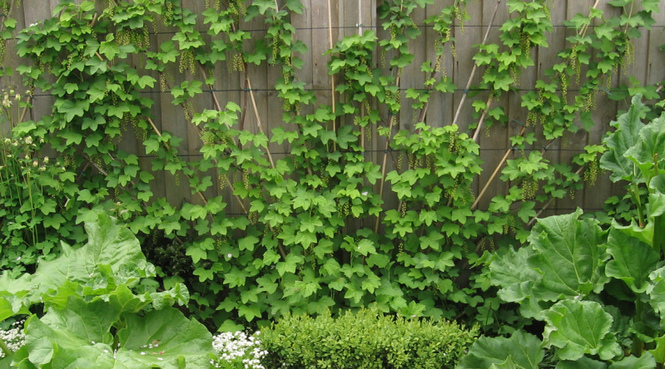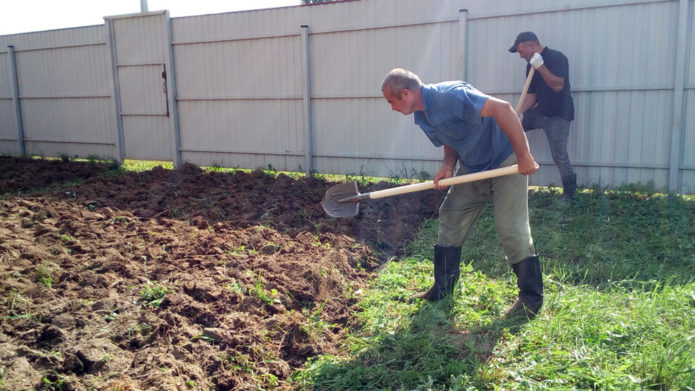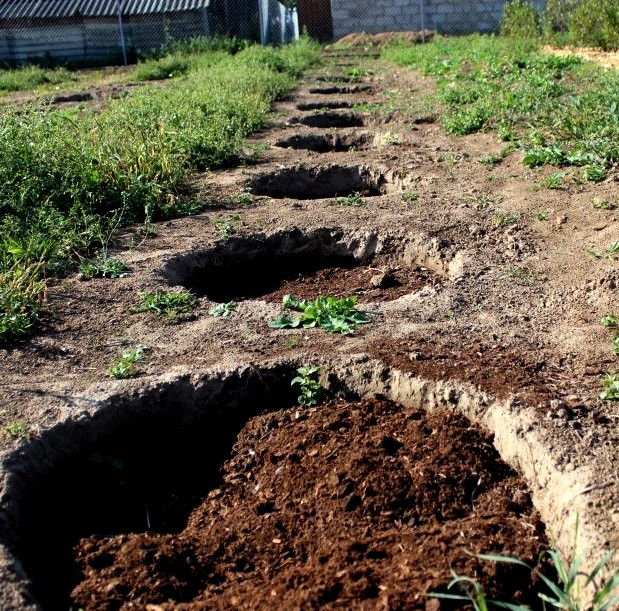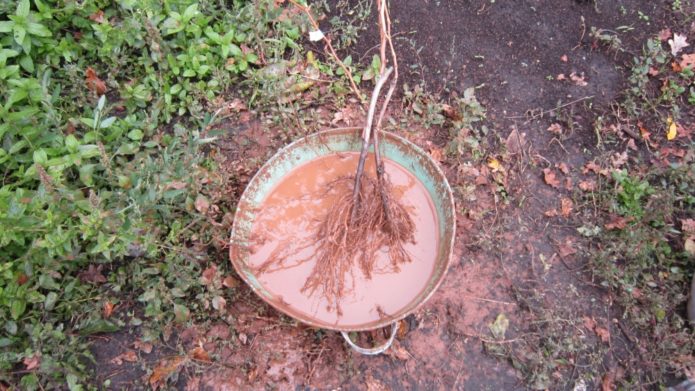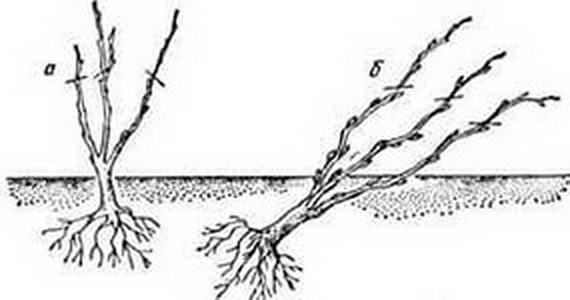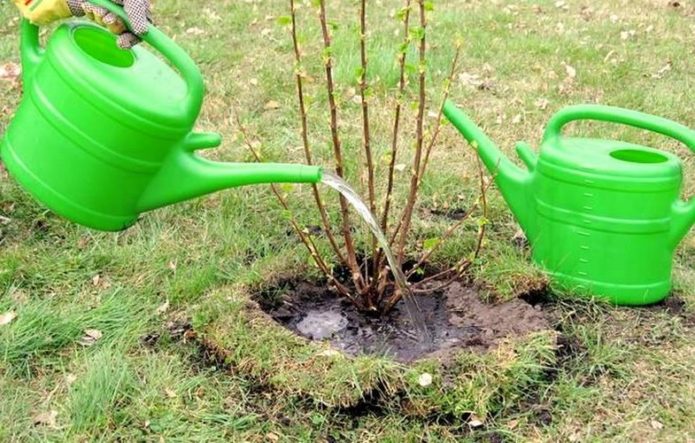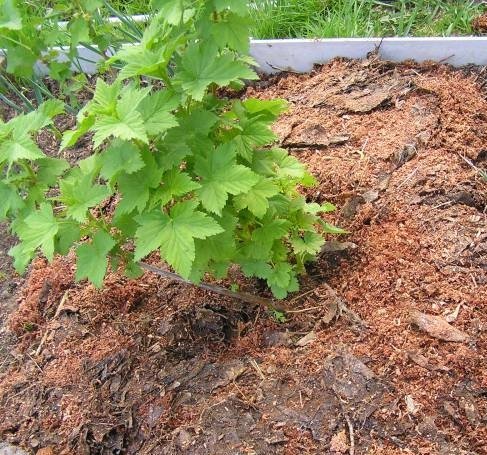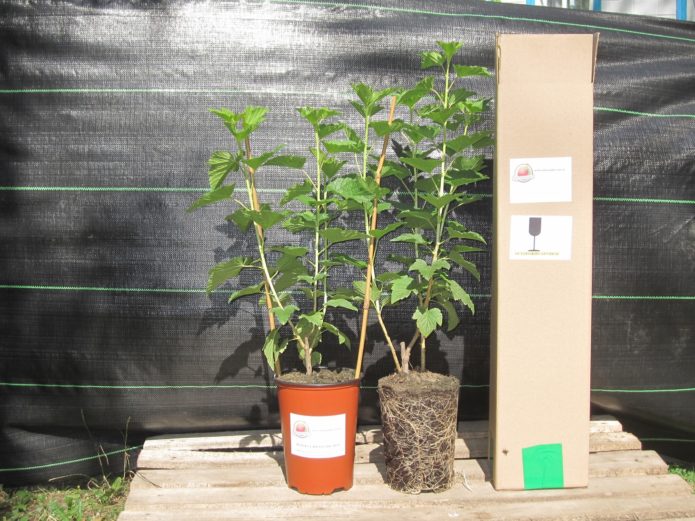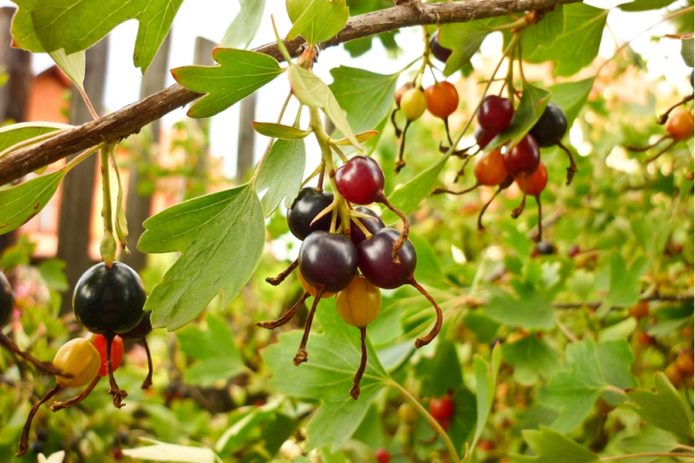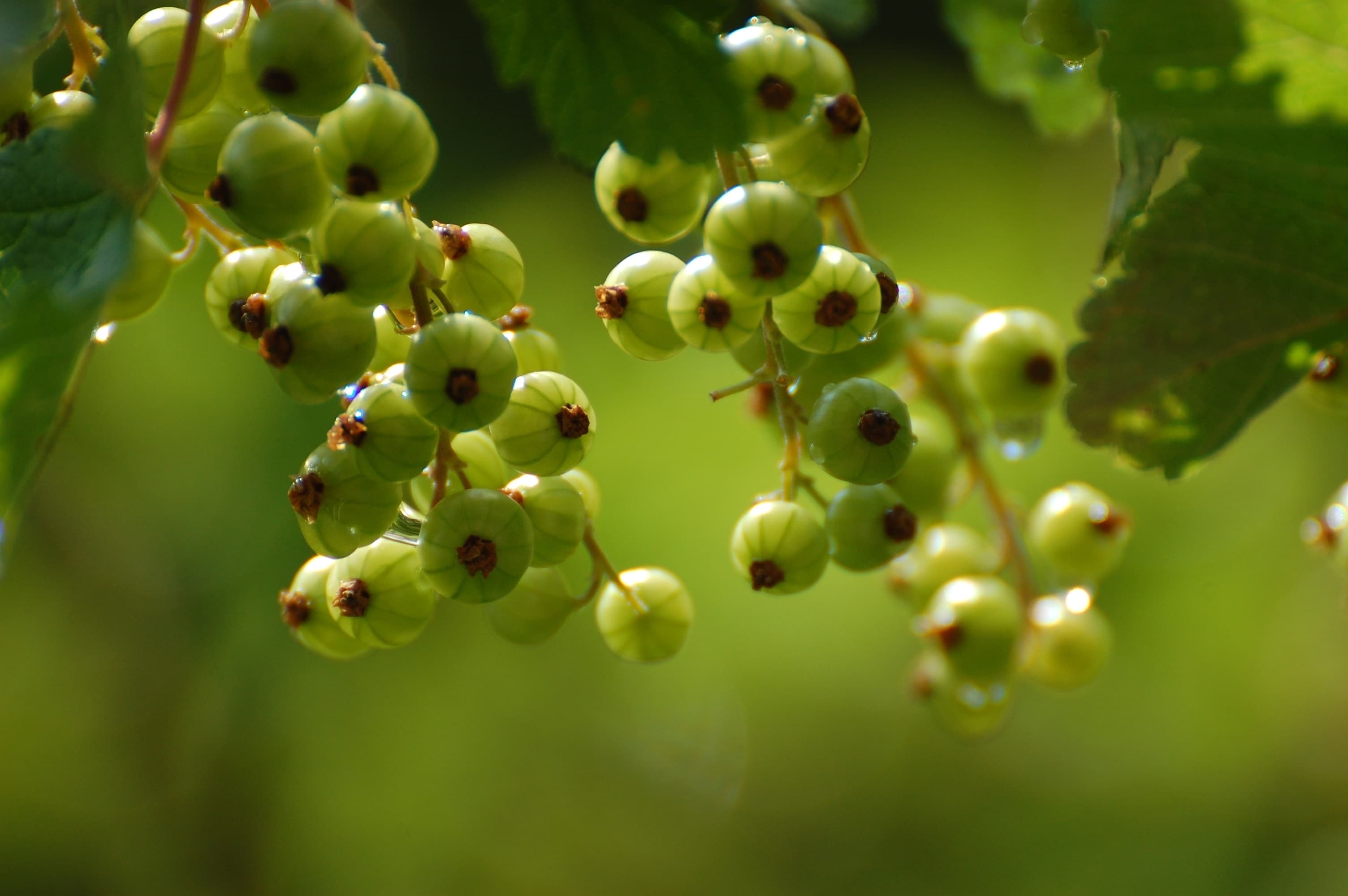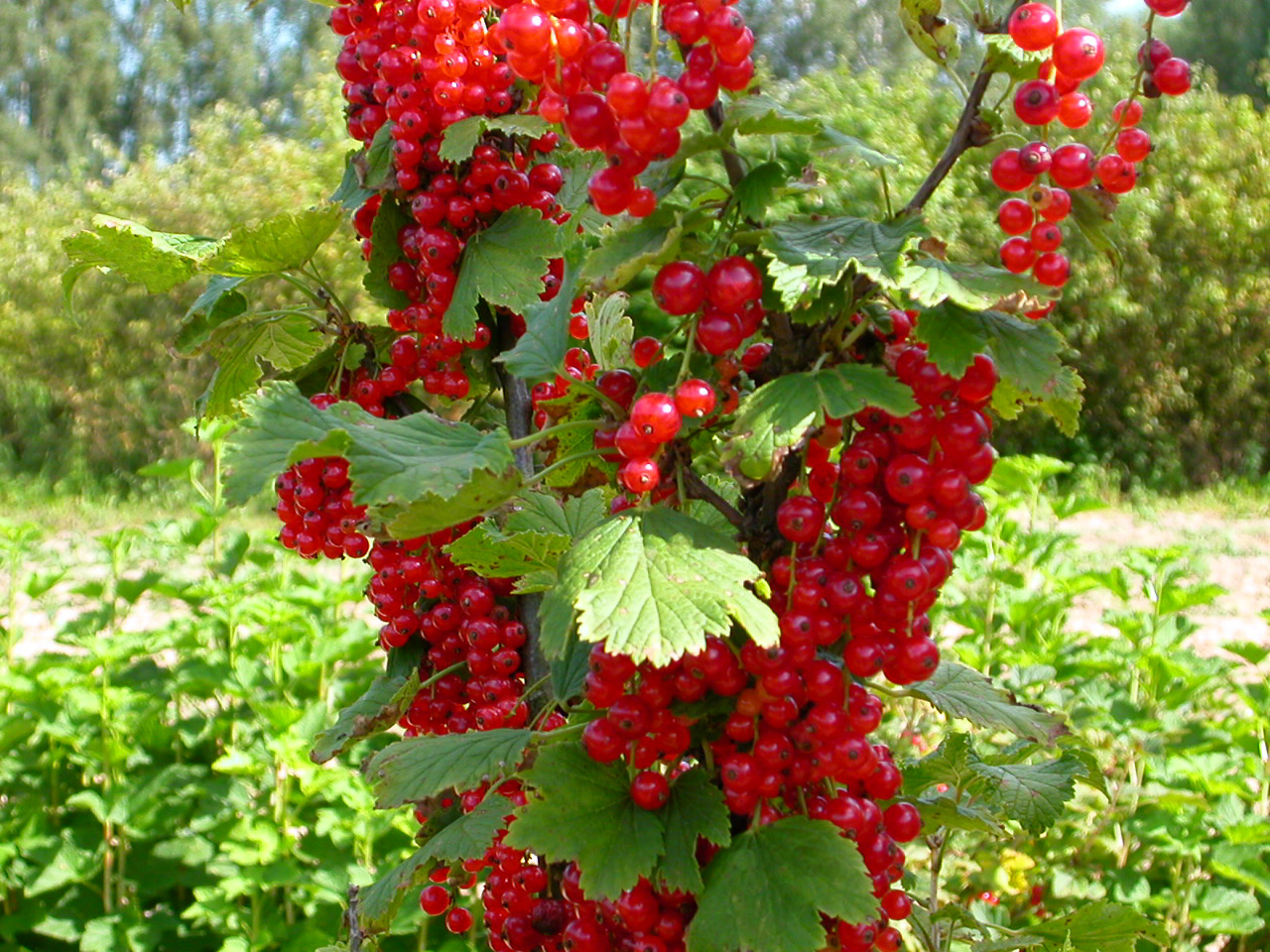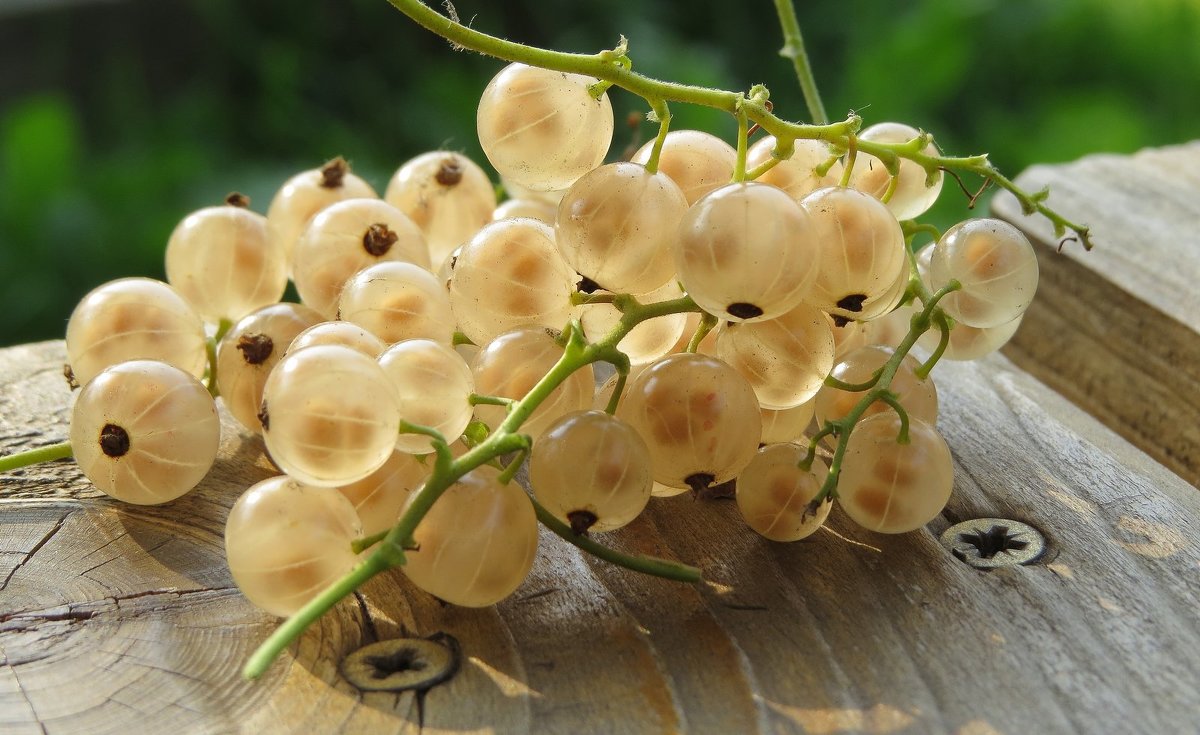Currant is one of the first shrubs usually planted on a new site: it is easy to plant it, and you will not have to wait long for the harvest. With proper care, stable yields are guaranteed for two decades. In most cases, currants are planted in the autumn, but if it did not work out, you can do this in early spring. It is only important not to miss deadlines and to do the job efficiently.
Content
Currant planting technology in spring
Most regions recommend plant currants in autumn: they try to do it in September, and in the south, you can grab the beginning of October. About two months should remain before the first serious frosts, so that the seedlings have time to take root in a new place, and in the spring they quickly start growing. Spring is not the best planting time, but this is only due to the fact that by the time the buds wake up on the bushes, it is still very difficult to work with the earth. There are no other obstacles to planting currants in spring.
Spring planting should be carried out before the leaves begin to unfold from the buds. If only a green cone appeared - this is a borderline situation: tomorrow it will be too late. Bushes with expanding leaves take root very hard. Therefore, they try to plant currants in the spring at the very beginning of April, and if the soil allows, then in March: for the success of the event, it is required that the soil thaws to a depth of at least 20 cm. The specific timing of the work depends on the region and the current weather, but all preparatory activities should be held in the fall.
Different types of currants have slightly different requirements for location, soil and other growing conditions. Black currant is a very frost-resistant crop, it is perhaps the least capricious of all berry bushes. It grows best in permanently damp areas, but without obvious stagnation of water. Red (and its variety is white) currants are more drought-resistant. For red currants, elevated areas are more suitable, it requires more sunlight.
Despite the frost resistance of all types of currants, areas for planting it must be protected from cold winds by fences or tree plantations. These shelters help the bushes to stay under a good layer of snow in winter, which allows the soil and roots to freeze less. In summer, trees or a fence reduce the drying effect of the same winds.
Currant grows on any soil, but better - medium composition, fertile, well cultivated. The optimal choice for black currant is loam, even heavy, and for red - light loam and sandy loam. The reaction of the soil extract should be close to neutral (at least a pH below 5.5 will not work). If black currant grows almost nowhere without watering, then when growing red in areas with an average rainfall, one can hope that natural moisture will be sufficient.
Features of transplanting currants in different seasons of the year:https://flowers.bigbadmole.com/en/yagody/smorodina/peresadka-smorodinyi-vesnoy-na-novoe-mesto.html
On the site selected for the currant, reliable removal of all perennial weeds should be carried out: wheatgrass, sow thistle, dandelion, etc. Long before planting, it is necessary to deeply dig the soil (preferably to a depth of 40 cm) with fertilization. Liming is obligatory on acidic soils.
The best option for preliminary preparation of the site is to sow on it a year before planting currants any siderates (lupine, clover, oats) with their embedding in the soil before the flowers appear. These herbs heal the soil and give the currants additional nutrition.
When digging the soil, fertilizers are applied, taking into account the preferences of future bushes. Currants need all the nutrients, but black currants need more phosphorus, and red ones need more potassium. Therefore, for black currant, when digging a site, they are introduced by 1 m2 one and a half to two buckets of manure, 200 g of superphosphate and 40 g of potassium sulfate, and for red (and white), the amount of potassium is doubled, and phosphorus is somewhat reduced. In addition, in any case, wood ash is added (up to a liter per 1 m2). During the spring preparation of the planting pits, approximately the same doses of fertilizers are added to each of them.
For spring planting, holes are dug in the fall, when there is free time. The minimum size of the planting holes is 40 cm in all dimensions. As in other cases, the lower infertile soil layer is thrown away, and the upper one is returned to the pit after thoroughly mixing it with the necessary fertilizers. In this form, the pits are left until spring, and in the spring they try to come to the site with seedlings as early as possible.
When planting several bushes, the following distances between them are observed:
- for red currants 2 x 1.5 m;
- for white - 2 x 1.25 m;
- for black - 2.5 x 1.5 m.
For better pollination of flowers and extension of the yield of the crop, it is advisable to have 2-3 varieties of currants of each species on the site, with different ripening periods.
Planting currants in a summer cottage, technology, features and unconventional methods:https://flowers.bigbadmole.com/en/yagody/smorodina/kak-posadit-smorodinu.html
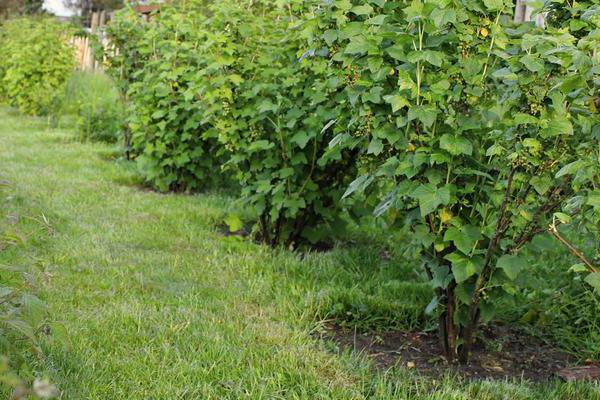
When planting several bushes next to each other, you need to understand that after a few years they will grow, and provide for the possibility of picking berries
Almost any crops can be planted next to currants, except, of course, those that grow strongly (horseradish, raspberries, blackberries) or devastate the soil (apricot, walnut). Any vegetables, especially onions and garlic, and strawberries are good neighbors. Black currant coexists well with honeysuckle. But it is not worth planting alternately red and black currants. Gooseberries live well next to red currants, but not black ones.
Currants are planted at the age of 2 years (and in the spring, it turns out, as it were, 1.5 or 2.5: after all, cuttings are buried in the fall to obtain seedlings). When planting, weak shoots are removed entirely, and only 12-15 cm are left from strong ones. The tips of the roots are slightly cut. The bushes are planted obliquely and deepened somewhat, which causes the growth of new shoots. Planting technology is the same as for most shrubs or fruit trees.
So, the spring planting of currant seedlings consists of the following steps.
- In the previous summer, the entire site was dug deeply with the introduction of organic and mineral fertilizers.
- In the fall, planting pits are prepared with a minimum size of 40 x 40 x 40 cm, fertilizing them.
- In early spring, having brought seedlings to the site, the shoots on them are greatly shortened and the roots are dipped in a mash made of clay, mullein and water.
- Having taken out half of the soil mixture from the planting pit, they make a kind of mound in it, on which the seedling is placed and the roots are spread. In this case, the seedling is placed obliquely, at an angle of approximately 45about, and the root collar is recessed 6–7 cm below the ground surface.
- Gradually, the roots are covered with a soil mixture taken out of the pit, periodically shaking the seedling. Then the soil is compacted by hand or foot, half a bucket of water is poured under the seedling, after which soil is added and sides are made around the planting pit.
- Water the seedling again: depending on the size of the pit and the condition of the soil, 1-2 buckets of water may go away. Mulch the soil with humus, peat or straw.
Since the soil dries quickly in spring, watering in the first month is repeated often, 1-2 times a week, achieving deep soaking of the planting pit.
When and how to plant red currants. Technology, timing and landing pattern:https://flowers.bigbadmole.com/en/yagody/smorodina/posadka-krasnoy-smorodiny.html
Video: planting black currants in spring
Features of planting a seedling with a closed root system
In the spring, planting seedlings with a closed root system (that is, sold in pots, containers or bags of soil) is much more reliable. By the way, such seedlings can be planted in the garden in general at any time of the year, from spring to autumn. Therefore, it makes no sense to rush to planting, usually such seedlings are planted already with leaves. For this, the pit is prepared in exactly the same way as if a bush with open roots was planted.
However, the earthen lump itself will take up a lot of space in the pit, and it, most likely, is already fertilized soil, so the amount of fertilizers applied to the pit can be slightly reduced.
The only problem is to remove the seedling from the container without destroying the clod of earth. If it is a disposable container (like a bag), it is placed in the pit, the wall material is cut and removed. And the pot ... Here you need to be guided by the state of the soil in it. Water in time, dry in time, so that a clod of earth with a seedling is shaken out of the pot without scattering.
A seedling with a clod of earth is buried obliquely into the planting hole so that 2-3 buds go underground on each shoot: they will give rise to new shoots. It is advisable to leave 2-3 buds above the surface, cut off the rest with pruning shears. Further - everything is as usual: the voids in the pit are covered with soil, the seedling is well watered, mulch and an earthen roller is made for subsequent watering of the bush.
Distinctive features in planting black, red and golden currants
The technique of planting different types of currants differs little, basically only the choice of location and distance between the bushes differ, as was mentioned at the beginning. So, since the bushes of red currant (and its white-fruited variety) grow less to the sides than black, they are planted somewhat denser to each other.The slightly different composition of fertilizers (red requires less phosphorus and more potassium) is due to the fact that its roots penetrate deeper. If black currants put up with penumbra, then red must be in the sun.
Since the root system of red currants is more powerful than that of black ones, it is advisable to dig the planting hole more spaciously: from 50 x 50 cm, and 60 cm deep. An additional bucket of humus will also enter such a hole. The actual planting technology consists of the same steps as in the case of any other currant. It is even easier with red currants than with black ones: its buds wake up 1–2 weeks later, so there is enough time for spring planting.
Red currant varieties bear fruit of various colors: from pure white to dark red. There are pink berries, there are amber ones. Therefore, it is wrong to say that white currant is a separate species. This is just a variety of red currant. However, the white berries are somewhat sweeter and more tender than the red-colored varieties, and they are mostly eaten fresh. White currants annually form strong young shoots that bear fruit within 6-8 years. The technique of planting it is exactly the same as for ordinary red currants.
The so-called golden currant stands apart. Its leaves and berries resemble gooseberries in shape, and the bush grows up to 2.5 m in height. It has strong roots and almost straight shoots. Despite the name "golden", the berries can be yellowish to purple in color, and sometimes they are almost black. These are very tasty berries, sweet, but the amount of vitamin C in them is reduced in comparison with other types of currants.
Golden currant grows normally both in the sun and in partial shade, with no special requirements for the soil composition. However, in order to get good yields, it is planted according to all the rules, preparing a large planting pit with a sufficient amount of fertilizer. The dimensions of the pit are 60 cm in each dimension. For spring planting take 2-3-year-old seedlings. Planting scheme - 3 x 1.5 m. When planting, the seedling is buried so that the root collar is 6-7 cm below the ground surface. Planting and care technology is similar to that for all types of currants.
Features of planting currants in spring in the regions
Currant is a plant of middle latitudes, it does not need the southern heat, it feels worse there. But you can find it in the not too far north. The rules for planting it in different climatic regions are similar, only the timing and initial care of the planted bushes can be shifted. For example, in Siberia, it is possible that the currant seedlings, which have not taken root, may freeze in snowless winters, so there the spring planting is completely justified. In Siberia (similarly in the Urals), spring comes quite late, and only by the end of May the temperature rises to about 10 aboutC. Therefore, the planting of currants is carried out not earlier than the May holidays, and more often - only in the middle of the month.
In the south of our country, as in the south of Ukraine, currants can equally be planted in spring and autumn. In most of these areas, the soil is quite fertile, so the problems with growing currants can only be from hot dry weather. Spring planting in the south of Russia and Ukraine is complicated by the fact that the soil dries up very early. Therefore, they try to plant the bushes as early as possible, and then they are systematically watered.
The climate of the north of Ukraine is similar to the climate of Belarus and the central regions of Russia, in particular, the Moscow region. If in these areas it is necessary to plant currants in the spring, this is done as soon as the ground melts (most often this occurs in mid-April). It is necessary to finish with plantings in early May. The Moscow region and Belarus are rich in peat: it is actively used both as fertilizer and as a material for soil mulching.In any case, when planting in spring, seedlings for the first time try to shade.
Video: tips for spring pruning and planting currants for beginners
Planting currants in a summer cottage is mainly carried out in the fall, the spring option in most regions is considered a backup. In the spring, there is very little time left for planting, and if the bushes have released leaves, they may not take root. However, when all the rules of agricultural technology are fulfilled, the currants planted in spring quickly catch up with the bushes from the autumn planting and begin to bear fruit in time.
